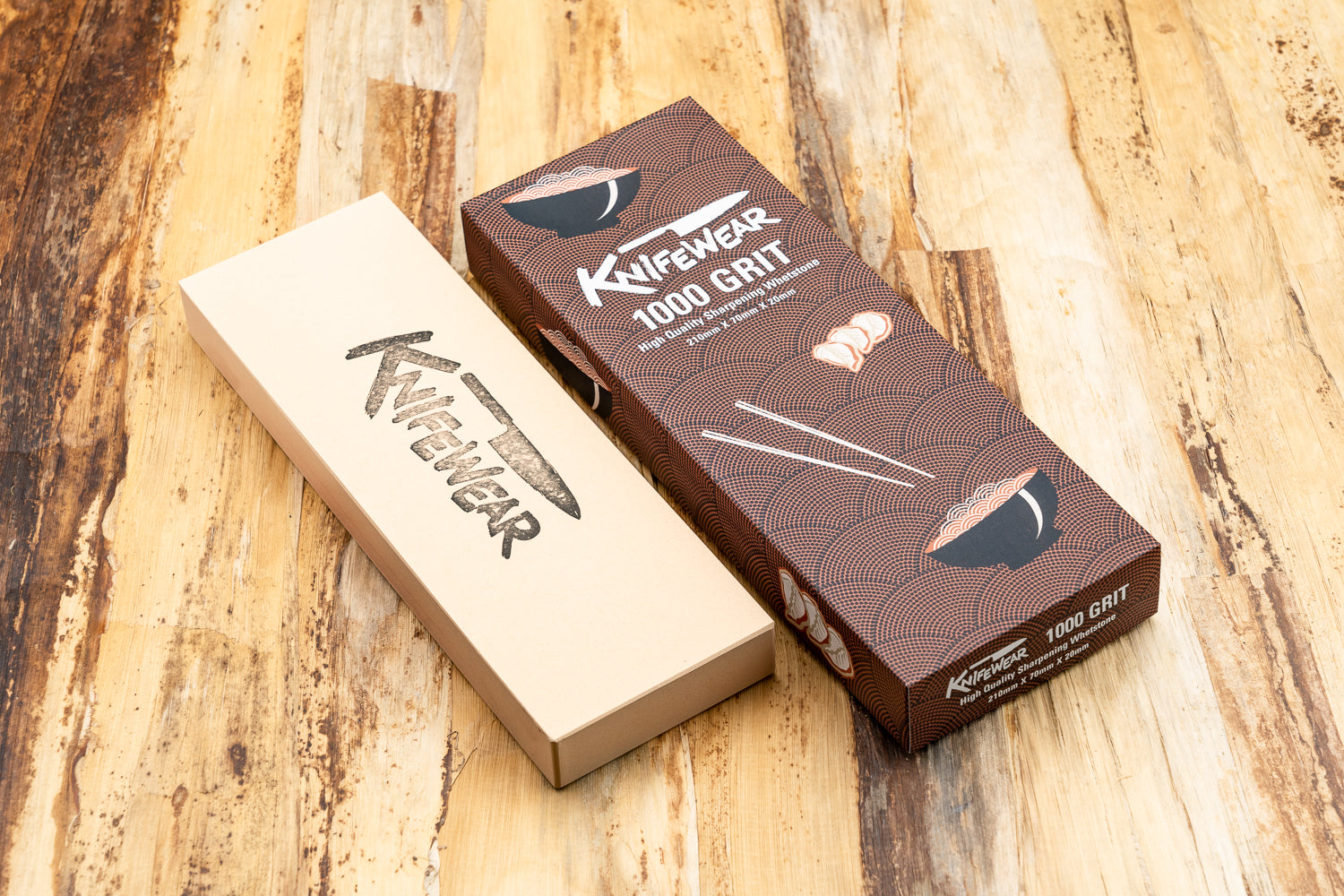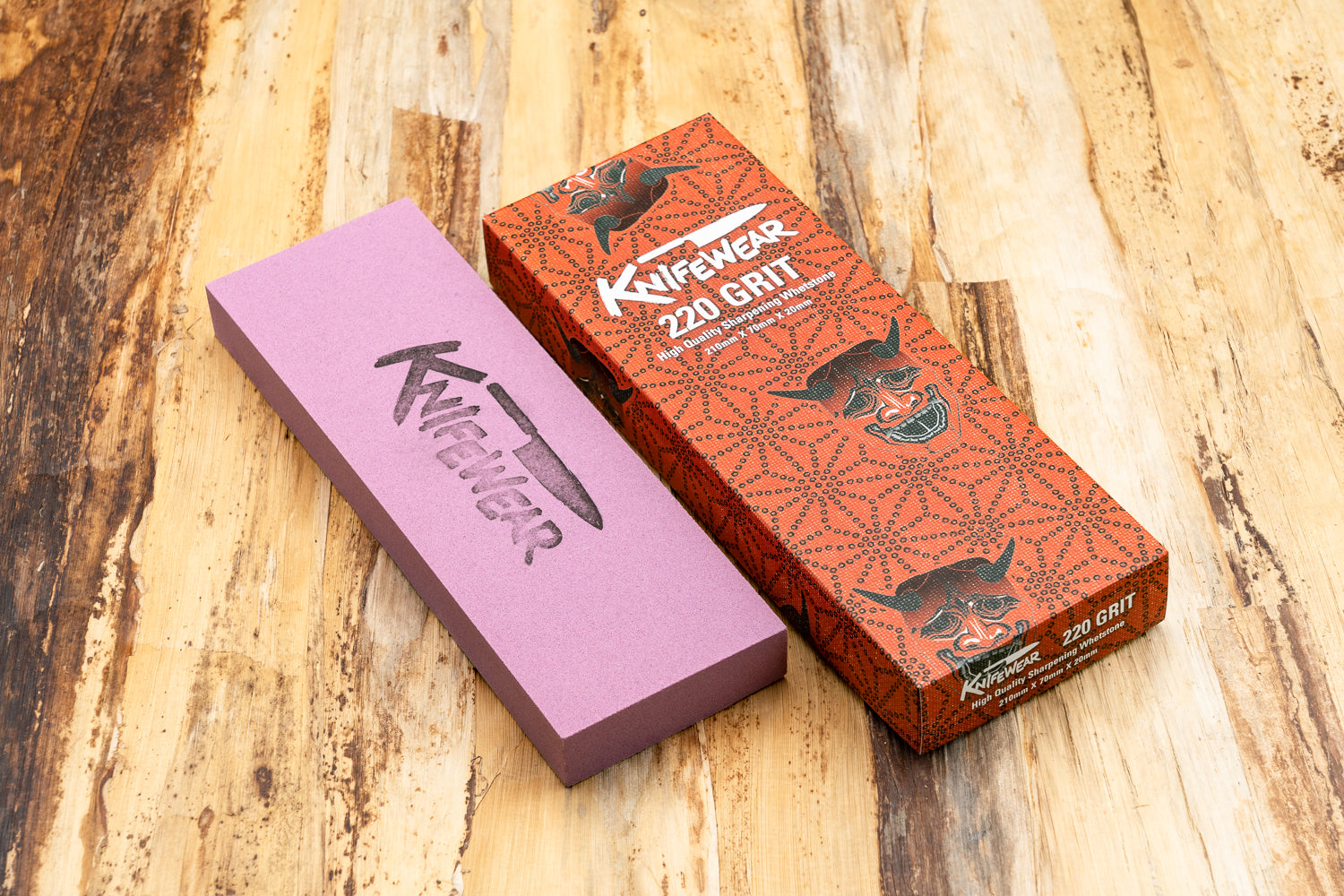Choosing the correct sharpening stone for your kitchen knives is a fundamental skill for any cook. Getting that perfectly sharp, reliable edge on your blade doesn’t have to be a mystery. Whether you’re a home cooking enthusiast tired of struggling with dull knives or a culinary professional aiming for peak performance, this guide will help you select the best grit for sharpening kitchen knives. We’ll explore what grit whetstone is appropriate for any task, from major repairs to final polishing. Consider this your definitive map to a sharper and safer kitchen.

Understanding Whetstone Grit: A Knife Sharpening Grit Guide
When you see numbers like 1000, 4000, or 8000 on a sharpening stone, they indicate its level of coarseness. Making sense of these numbers is the first step in knowing what grit to use for knife sharpening.
- What Is “Grit”? “Grit” defines the abrasive coarseness of the stone’s surface. The principle is simple, just like with sandpaper: a low grit number signifies coarse, aggressive particles, while a high grit number signifies fine, gentle particles. Coarse grits remove significant amounts of metal to reshape an edge, whereas fine grits are for honing and polishing an already established edge.
- How Particle Size Impacts Your Blade Coarse grits perform the heavy-duty work of establishing a new edge on a very dull or damaged knife. Finer grits are used in succession to refine that edge, making it incredibly smooth and keen for effortless slicing. Your choice directly determines the final sharpness and cutting performance of your knife.
What Grit Stone for Knife Sharpening? A Quick Look
Here is a breakdown of the standard grit stone categories and their uses:
- Coarse Stones (Below 1000 Grit) Think of these as the repair tools for your knives. A coarse stone is necessary when a blade has significant chips, nicks, or has become extremely blunt. Its purpose is to grind the edge back into a usable shape.
- Medium Stones (1000 to 3000 Grit) This range is the workhorse for general sharpening and is often considered the best grit to sharpen knives that are in regular use. A 1000 grit stone, in particular, strikes an excellent balance between effective sharpening and minimal metal removal, making it the ideal starting point for routine maintenance.
- Fine Stones (4000 to 8000 Grit) After the main sharpening is done, a fine grit stone is used to elevate the edge to a new level of sharpness. This is how you achieve a polished, mirror-like finish that cuts with extreme precision. The 4000-6000 grit range is perfect for creating a refined edge for most kitchen tasks.
- Super-Fine Stones (Above 8000 Grit) This is the specialist’s choice and the best grit for sharpening knives to a surgical level of sharpness. These stones are typically reserved for high-performance Japanese cutlery or for tasks like sushi preparation where immaculate cuts are essential.

Choosing the Right Grit Based on Knife Condition
The condition of your knife is the most important factor in deciding which grit to use. Here’s a simple guide:
Is Your Knife Dull or Chipped?
- Use coarse stones (100–400 grit)
When a blade is “extremely dull” or has visible chips, you need a coarse stone with a grit of 1000 or less to do the initial repair work, as advised by SharpeningSupplies.com.
Routine Sharpening & Maintenance
- Use medium grit stones (700–2000 grit)
For your regular sharpening routine, a 1000-grit stone is “a perfect start,” while a 2000-3000 grit stone will help to smooth out any imperfections on the edge, according to SharpPebble.com.
Finishing for a Thinner, Razor Edge
- Use fine stones (4000–6000 grit)
To take your knife from sharp to exceptionally sharp, a fine stone is essential. As the experts at Misen.com and Chefs-Edge.com explain, stones with a grit over 3000 are “specifically for finishing” and creating “a better edge” for slicing through things like “sinewy meat.”
When to Go Super-fine?
- Specialty-forged or sushi knives (8000+ grit)
For those prized Japanese knives or when you need an incredibly clean cut, an 8000+ grit stone is your best friend. Chefs-Edge.com suggests that while “6000 grit is enough for meat; 8000 is better for fruits/vegetables.”
Grit Progression: A Step-by-Step Sharpening Guide
Achieving the best results involves working through a sequence of grits, moving from coarse to fine. This systematic approach ensures a uniformly sharp and durable edge.
- The Three-Stone System: This comprehensive method involves starting with a coarse stone for repairs, using a medium stone to sharpen the primary edge, and employing a fine stone for the final polish.
- The Two-Stone Combination: For most home users, a dual-sided whetstone offers an excellent balance of function and value. The 1000/6000 grit stone is an extremely popular combination, as it handles both main sharpening and fine polishing, making it arguably the best grit whetstone for kitchen knives for general purposes.
- The Single-Stone Workflow: If you are diligent about frequent maintenance, you can maintain a sharp edge using only a single medium-grit stone (between 1000 and 3000 grit). This is only effective if the knife is never allowed to become truly dull.
Best Grit for Sharpening Kitchen Knives (Specifics)
Different blade types benefit from different finishing grits.
- Western vs. Japanese Steel: Japanese steel knives are typically finished on a 2000 to 4000 grit stone. The harder steel of Japanese knives can take a much finer polish, so finishing on a 3000 to 8000 grit stone is recommended to maximize their cutting potential.
- Meat vs. Vegetable Cutting: A 4000 to 6000 grit finish creates an edge that slices cleanly through meat. For delicate vegetables, a higher 8000 grit polish can result in incredibly clean cuts with minimal cell damage.
Popular Stones & Starter Kits
If you’re ready to begin, these are some widely respected options often cited as the best grit stone for knife sharpening.
- Dual-Sided Whetstones: The King 1000/6000 grit stone is a classic recommendation for beginners, offering both a primary sharpening surface and a fine finishing surface in one block.
- Mid-Range Kits: Brands like Cangshan offer 1000/6000 grit kits that include useful accessories like a sharpening guide and a stone flattener, creating a comprehensive starting package.
- Premium Single Stones: For those seeking exceptional quality, a high-end stone like the Naniwa Chosera 3000 grit provides a superior feel and leaves a remarkably durable and refined edge.
Maintaining Your Whetstones
Your sharpening stones require maintenance to function properly. Keeping them flat is essential for effective sharpening.
- Why Flattening is Crucial: With use, a stone will become concave or “dished out” in the center. Sharpening on this uneven surface will create a rounded, ineffective edge on your knife.
- Flattening Tools: A diamond lapping plate or a dedicated flattening stone is used to grind the surface of your whetstone back to a perfectly flat plane, ensuring consistent results.
:max_bytes(150000):strip_icc()/faw-product-king-whetstone-starter-set-1000-6000-nsimpson-4110-c9eb3efbdbed469693a44e3baedb3d2f.jpeg)
Specific Recommendations for Kitchen Knife Sharpening
Different knives have different needs. Here’s how to tailor your sharpening to your specific blades.
Stainless vs Japanese Hard Steel Profiles
- Stainless: 2000–4000 grit; Japanese: 3000–8000 grit
Standard stainless steel kitchen knives generally do well with a finishing grit between 2000 and 4000. For the harder steel of Japanese knives, you’ll want to go higher, in the 3000 to 8000 grit range, to achieve that signature sharp and delicate edge.
Finishing Grit for Meat vs Veg Cutting
- 4000–6000 ideal for clean meat slicing
A finishing grit of 4000 to 6000 is perfect for creating an edge that slices cleanly through meat without tearing the fibers. For vegetables, an even higher grit can lead to stunningly clean cuts.

Popular Stones & Starter Kits
Ready to get started? Here are some popular and highly-regarded options.
Dual-Sided Whetstones
- King 1000/6000 grit – great beginner option
The King dual-sided 1000/6000 grit stone is a classic choice for beginners. As one reviewer from SharpPebble.com noted, the “1000-grit blue side was the coarser … 6000-grit was finer,” praising its excellent balance for both maintenance and polishing.
Mid-Range Multi-piece Kits
- Cangshan 1000/6000 + accessories
For those who want a complete package, the Cangshan 1000/6000 grit kit often comes with a sharpening guide and a flattening stone, providing everything you need to get started.
Premium Single Stones
- Naniwa Chosera 3000 grit for long-lasting sharpness
If you’re looking for a top-tier single stone, the Naniwa Chosera 3000 grit is a fantastic investment that will leave your knives with a durable and exceptionally sharp edge.
:max_bytes(150000):strip_icc()/faw-product-king-whetstone-starter-set-1000-6000-nsimpson-4110-1-13a07191920b46d18159f9343369b513.jpeg)
How to Maintain & Flatten Your Stones
Your sharpening stones need a little TLC too! Keeping them flat is crucial for getting a good edge on your knives.
Why Flattening Matters
- Prevent edge rolling and uneven sharpening
Over time, your whetstone will develop a dip or “saddle” in the middle. If you continue to sharpen on an uneven surface, you can actually round the edge of your knife instead of sharpening it.
Tools for Flattening
- Diamond lapping plate, flattening stones
To keep your stones perfectly flat, you can use a diamond lapping plate or a dedicated flattening stone. Regularly running these over the surface of your whetstone will ensure it stays in prime condition.
FAQs of What Grit Sharpening Stone for Kitchen Knives
Can I just use a 1000 grit stone?
For basic maintenance of a knife that is not overly dull, a 1000 grit stone can be sufficient. However, for a truly refined and polished edge, you’ll want to follow up with a higher grit stone.
What’s the difference between 6000 and 8000 grit?
Both are finishing stones, but an 8000 grit stone will produce a more polished, mirror-like finish than a 6000 grit stone. The difference is subtle, but for those who want the absolute sharpest edge, it can be noticeable.
How often should I sharpen?
This depends on how often you use your knives and what you’re cutting. A good rule of thumb is to sharpen your knives every 1-2 months for regular home use. A honing steel can be used in between sharpenings to maintain the edge.
Should I ever skip coarse grit?
Yes! If your knife is not chipped or excessively dull, you can and should skip the coarse grit. Starting with too coarse a grit will needlessly wear away the metal on your blade. As one user on Knivesandtools.com advises, “don’t skip steps … a 6000-grit stone will get light scratches from the previous stone off and make the cutting edge smooth.”

Conclusion
Choosing the right grit sharpening stone for your kitchen knives is all about matching the stone to the condition of your blade. For most routine sharpening, a medium-grit stone is your workhorse. For a truly polished and refined edge, you’ll want to finish with a fine-grit stone. And don’t forget the importance of keeping your stones flat to ensure a consistent and sharp edge every time. With a little practice, you’ll be able to keep your knives in top condition, making your time in the kitchen safer and more enjoyable.




